Introduction
I had been making quite a few demos over the past several months. I was ready for a larger project to be given out as a Christmas present which put the deadline as the end of December 2017.
I have always been enamored with the world of Alice in Wonderland and I particularly enjoyed American McGee’s take on design with his vision of Wonderland. I used his design as a springboard for my story.
Production Process
I was running the show on this process. I needed to make sure all the various departments received the attention they deserved. . . for each level.
To start the project I had an idea for the art style and core element game play for player weapons. I sketched out a test scene to test all of the weapons, movement, items, and UI systems.
From there, I sketched out various levels on pen and paper with dialogue locations.


I then took a cylinder to act as my player and began iterating on the bones of the level. There were a lot of white boxes to represent platforms, white boxes to represent trees, white boxes for characters, white boxes for projectiles. This was also the stage that I integrated dialogue to push the story along. Every level received the same white box treatment before I let myself move on. The next iteration, I started to integrate the art. I started at the prologue and the first level to determine the overall fit and feel then just pushed through level after level until all 10 Chapters had a unique feel to them with their own characters and personality.


The next pass, I worked through enemy models and character models, again starting at the prologue and pushing my way through. You can see the prologue the art is a little hit or miss and by Chapter 10, there were quite a few art assets that were getting recycled.
As I went along, I was working through testing. I would test a little bit, mark it complete, then move on to the next segment. Had I budgeted testing into the schedule, that would’ve saved me headaches right at the end of the project.
To keep myself motivated and accountable, I would update my website every Sunday night complete with video demonstrating what I accomplished during the week. That playlist can be seen here – Alice: Development Log Playlist
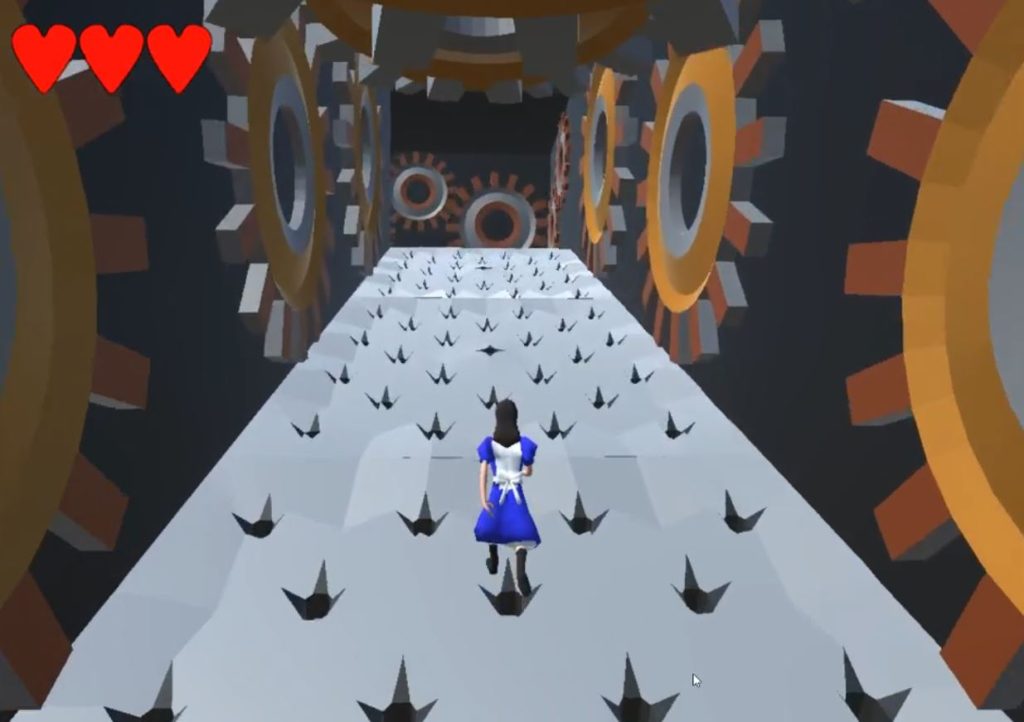





Challenges
Burn out: The largest problem I had was my energy versus my time. I started this project while I was between jobs. That allowed me to apply for positions in the morning, then work on the game for 6 hours a day and I was making serious progress and I found an excellent rhythm.
Once I found a job, my available time dwindled along with it, my energy. I was not going to hit my Christmas deadline (I would rather have a good finished product than a rushed one off of an arbitrary timeline) so I tried again for the end of February.
Toward the end of February, I was working 8 hours a day, driving to and from work an hour, then trying to dump 6 hours into Alice. . .every day.
That is not sustainable and the results quickly showed with my energy, health, and major amounts of burnout. Toward the end of the project, I had made a room that had contained chess puzzles that, once solved, would open a riddle room. I did a build and run to test it and it wasn’t working no matter how I tried to slice it so I cut the whole room (about a week of work) rather than try to fix it.
Once I labeled the game as done, I kept pushing until 3 in the morning to finish a trailer just to say “I have a trailer” had I been awake I would’ve structured that trailer differently, but by that point, it was already on Facebook, Youtube, and Reddit.
Pipelines: The good side about working by yourself is, you can set your schedule and your pipelines. On the downside, your boss can demand more than you’re capable of. If I have my writing and story hat on, I am met with unbounded creativity. That creativity then is curtailed by my level of art and animation skills. That list is then curtailed once more when I actually get into the coding elements of it (which was my weakest department at the time).
Owning the whole pipeline really forced me to envision what story do I want to tell and do I have the skills to pull that vision off. Sometimes I would iterate 4 or 5 times before thinking – Yes, I can write this, model this, and code this. Once that uniformity fell into place, I put it in the game.
That is also evident by the complexity in the game. The harder the puzzles, the deeper in the game they are.
Feature List
Systems: On the back end, I created a collectable system (with backstory), a currency system (for weapons upgrades), a Save/Load system, Achievements, Xbox controller support, and allowing the player to set the resolution and screen size
Level Design: 10 full Chapters complete with unique character art, animations, enemies, design, puzzles, and feel

Cutscenes: With dialogue (not voiced), camera changes/animations/angles, occasional decision trees
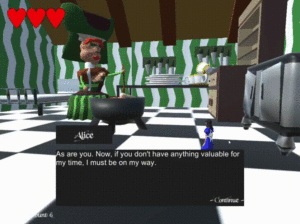
Varying types of puzzles: Simple platforming, shooting targets, riddles to solve, playing music in rhythm, combat trials, shrinking and enlarging, perspective changes to a side scrolling ship segment, doors/switches, and a theatre segment
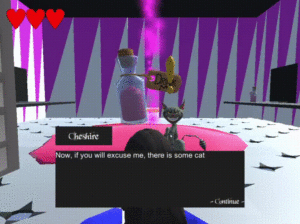
Combat Generic Enemies: I modeled 7 unique enemies with their own attacks and animation trees
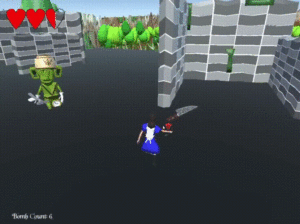
Combat Boss Enemies: there were also 7 bosses with multiple stages with unique elements/patterns
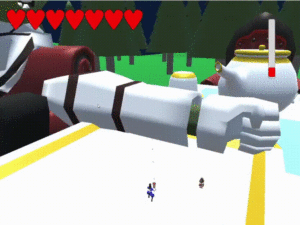
What Went Right
Overall, I was very impressed with what I was able to pull off in such a short time period. I played the game not too long ago and I was still impressed at all the systems that (mostly) work exactly as I intended them to. There is quite a lot of length to the game clocking in between 2-4 hours with a little replay ability.
I really enjoyed the art in the project. It feels cohesive, as in, all the characters and models feel like it belongs in the world that it is in. Each of the bosses feel like their Alice in Wonderland character.
Mostly, I think I enjoyed that this game is fun. I looked forward to playing it, saving it, quitting, opening it, loading, and jumping right back into the world. Sure, there are bugs and issues, but this project was a labor of love and I couldn’t be more proud of it.
Lessons Learned
UI/Player feedback: Looking back, I wish I would’ve added more UI hints to tell the player what to do. I made the game, I know where things are, but I gave it to friends and family and they were confused as early as the first chapter about what to do.
Combat: This was supposed to be a main element of the game, but I had never made a combat game before. That is quite apparent when you jump on or over enemies, they attack you but you don’t take damage, enemies clip in and out of the floor after contact.
Testing: Oof. This is quite apparent. I waited until the last week of the project to do a full build and play through the game. Not only did I find an avalanche of bugs in a variety of levels, but it also brought things to my attention that should’ve been adjusted way earlier in the project (like lighting).
Multiple Iterations: I started with the simple elements in the Prologue (touch these things to move on) then moved up to Chapter 10 (multiple conversations, enemies, puzzles, mazes, keys, and a multi stage boss battle leading to player choice in the final decision cutscene). Had I made multiple iterations, I could’ve balanced the challenges of the project a little more through the game instead of keeping them all where I learned them.
Self-care/Burn Out: Owning the full pipeline and putting 6+ hours in every day even after starting a full-time job, that causes a ton of burn out to the point of needing to take a 2 month break.
Lack of a solid schedule: This helped with the flexibility of life, but it also caused some disorganization on what needs to be achieved each week in order to meet my deadline.
Summary
Studio: Rabbithole Productions
Title: Alice
Staff: 1 (myself)
Budget: $0.
Total Play Time: 2-4 hours
Development Time: 6 months and 17 days
Release Date: February 18th, 2018
Platforms: PC, Mac, Linux
Software Used: Unity, Blender, Jukedeck
Game Link: https://chaoticplay.itch.io/alice
Full Gameplay Video: Coming Soon!